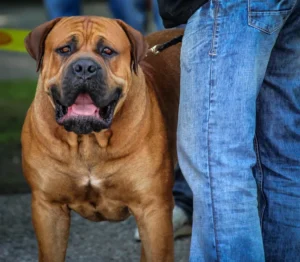
Kicking horses can be very dangerous. Even if your horse is simply trying to hit away a biting fly and you happen to get in its path, you could still be injured by them. Some horses develop bad habits of kicking while riding or being driven and can become quite hazardous on the ground or while being transported.
Why Horses Kick
Horses often kick for various reasons. As mentioned previously, this could include biting flies around its legs and belly being fed on by mosquitoes; colic symptoms will often result in horses kicking their bellies and stamping their legs or stamping with their hooves to relieve discomfort; they might even kick if something like prickly weed tickles their legs or belly; however these kicks tend not to be very powerful since any attempt at relieving pain could make matters worse!
Horses are often seen kicking at each other in the pasture when playing, often as part of an amusing display of high spirits or to release excess energy. When horses playfully kick each other, these won’t usually be powerful kicks; they usually just display high spirits while galloping or bucking away excess energy.
Defense
Horses also kick to protect themselves, often using powerful kicks with excellent aim. Horses may use kicks as a form of self-defence if another horse approaches too closely to food sources or threatens another herd member in some other way; in the wild, horses use powerful kicks with both back legs at once to ward off predators; a mare may kick at an uncooperative stallion to warn it away; this action also acts to show their unhappiness at being bred upon!
This defensive instinct may explain why horses kick when alarmed–such as when someone, a person, dog, or another animal suddenly appears behind the horse; or when equipment loosens and drags behind or alongside it. A horse being trained to pull may kick at any device associated with pulling, so slow introduction should be allowed so as to get acquainted with its sights and noise.
Kicking can quickly become an issue during handling, riding or driving of horses. Somewhere along the line, a horse has learned that kicking is the best way to deal with an object it dislikes; thus becoming an undesirable habit or vice. When riding together in groups or at horse shows with multiple horses being ridden too close together behind, some may become anxious and kick out as a warning signal; this becomes even more dangerous as both rider and horse risk becoming injured from kickback attacks; I know of incidents in which one horse kicked at another horse which resulted in injuries being sustained by those riding close behind: both riders have taken hits due to horse kicking from another horse that caused injuries for all parties involved (the horse as well as spectators) from being hit from horse kickback attacks from which kicked out by another horse to warn them away.
Some horses do not like dogs, cats, or ponies and will kick at any who get too close. After being saddled up quickly or having the girth/cinch tightened quickly and being injured during these processes can often ‘cow-kick’ in anticipation of being pinched – this happened to my daughter when bending under her to tighten it quickly – her nose was broken by this young horse when it responded by cow kicking at her as she reached under it for donning the cinch up quickly resulting in her breaking her nose!
Some horses will kick out in defiance as a show of disrespect; these kicks may appear directed toward you but won’t connect since their kicks don’t reach. This often occurs while lunging or working in a round pen; horses also sometimes kick the walls of their stalls when bored or impatient.
How to Address an Errant Kicker
If your horse appears to be an occasional kicker, there are a few tactics you can try. Tie a red ribbon around its tail when out riding or ride at the back of the pack so everyone knows they may kick. Teach your horse to respond to leg aids. A horse that’s moving forward less likely kicks – so if another horse comes too closely behind, swing its hindquarters to one side so any attempt at kicking will miss its target.
Handling a horse that kicks requires extra caution. Any time your horse is exposed in public, it should wear a red ribbon as a warning of its habitual kicking behavior; you and everyone who must work near him/her must remain aware of these tendencies; stay out of range of their hind legs; if attending an exhibition/fair of any sort you should position him/her away from foot traffic and other horses.
Learn to Watch Body Language
Most horses will give a warning before lashing out, so in addition to understanding what situations could cause kicks, it is also essential that you learn the body language of each horse before lashing out – this includes understanding its ears, head and body posturing that may precede an imminent kick from it. Recognizing these signs gives the horse something else to think about!
Your best hope for mitigating vice is desensitizing the horse. If it reacts negatively when exposed to certain things, such as being saddled, work gradually to become used to it and work toward familiarizing him/her with that thing. If it cow-kicks during saddleing sessions, be gentle with each process step – and if your horse regularly kicks others in its pasture it may need to be separated in order to ensure no injury comes from this behavior.
Kicking Chains One method of dealing with kickers is “kicking chains”. Short lengths of chain are secured around each hind pastern so if the horse kicks, they will feel it against their legs and likely dissuade it from doing so again. Kicking chains may backfire on you in several ways. If they scare the horse, this can further compound their issues and applying any boots or wraps will become an ordeal; when worn for the first time, your horse could react violently! Some horses get used to using kicking chains and they may become less effective over time, or kick while wearing them but remain problematic after removal from them. Furthermore, it’s possible for chains to get caught on your shoe or the wire fence (unlikely but possible), so do not use these while riding and take extreme caution in using them if deciding to experiment.





